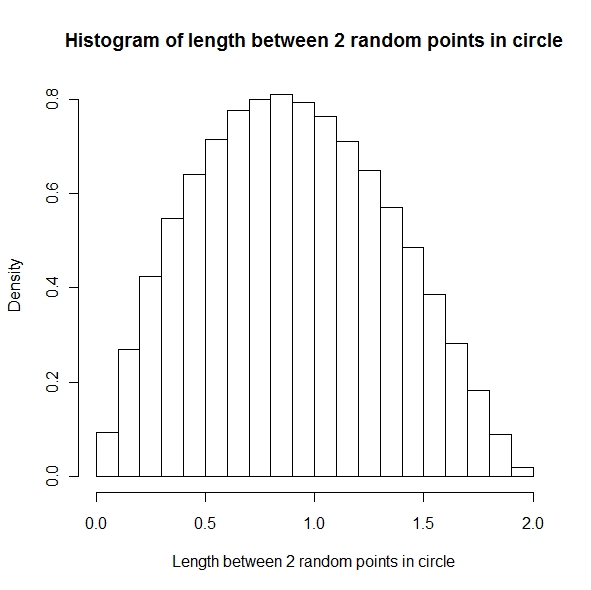-
Posts
719 -
Joined
-
Last visited
-
Days Won
5
Content Type
Profiles
Forums
Events
Gallery
Blogs
Everything posted by bushindo
-
Ah, i see. You got me there. I also examined this with a brute force method, although there were only 120 options, which are not too bad. If someone found the solution by hand with some ingenious elimination method, I'd like to hear about it.
-
All the power of Krypton is no match for the secret weapon of earth- linear algebra!
-
I don't know german, but I'm pretty sure that solution looks more like Klingon than german.
-
Nice puzzle. I had a good laugh when I saw the plain text.
-
I made a mistake with the algorithm.
-
Interesting problem. Here are some approaches. The approach is simple. Define a quantity that we want to maximize, let's call it the old-fashioned `utility' from economics. The trick is in how you define utility.
-
Found tons more solutions
-
Good puzzle. This Walter Penney person is a genius.
-
Here's a challenge. We all know that a magic square is an arrangement of integers from 1 to n2 such that the sum on each row, column, and diagonal adds to the same sum. Extend that to three dimension. Using integers 1 to 27, construct a 3x3x3 arrangement so that the sum on each row, column, pillar, and the four main diagonal adds up to the same sum. 1) What is this common sum for the 3x3x3 arrangement? 2) What is this arrangement?
-
There are many different methods of sampling. My favored method is to uniformly sample x from (-1, 1) and y from (-1, 1). If the coordinate (x,y) is outside the circle (that is, if x^2 + y^2 > 1 ) then I discard the coordinate and sample again. Conceptually, we sample from the square circumscribing the circle, and discard all points outside the circle. It is equivalent to uniformly sampling on the circle.
-
Just some comments. If bonanova were sampling uniformly from the cartesian plane, and you were sampling uniformly from polar coordinates (as in uniformly sample radius in (0, 1) and theta in (0, 360) ), then you would arrive at different answers since the two methods are not equivalent. Uniformly sampling on polar coordinates result in a distribution that favor points near the origin. That is, if you pick a random circular region E near the edge of the circle, and compare that to a circular region C of the same area near the center, sampling uniformly on polar coordinates is more likely to produce a point in C than in E. Both methods are equally valid, of course. We just need to consider which one is closer to the intended meaning of `random' in the OP.
-
Maybe it's just me, but don't the O and I cancel out of both sides of the equation? If cancelling is possible, then the resulting system isn't that formidable.
-
My pleasure. Again, that is a nice puzzle that you posted.
-
Nice puzzle. We don't have enough information to determine the price of each type of candy, but we do have enough information for a sum.
-
-
I need this information for contesting a ticket. Any help would be greatly appreciated. Let's say we're driving on a perfectly flat and straight road on a sunny morning with good clarity. You glance into the rear mirror, and see a tiny car behind you, just at the edge of the horizon. The distance is such that the car is barely visible; if it were any further, it probably wouldn't be visible to you at all. That car turns out to be a police car measuring your speed. Estimate how far that car is away from your car.
-
Best answer. One of those lateral solutions that makes more sense and fits the original parameters even more than the intended solution.
-
The double integral is a nice way of finding the average size of all triangle constructed from 3 points on a circle's circumfence. Kudos on a job well done. However, the extension to A, B, C anywhere in the last part is the average triangle size of all triangle whose vertices are equidistant from the origin. This method would not count the triangles with vertices of different lengths to the origin, so I think it's safe to say that we determined the lower bound to part two is 1/2pi^2.
-
if any of you are interested I could type up my method/working. I'm interested. Please post your method.
-
Interesting question. Originally, I thought that we can specify a random circle on the plane by picking a random coordinate for the center, and then uniformly sample a radius from the interval (0, inf). That didn't work out so well in computing the probability of containing the origin. Here's another way to construct the random circle. Uniformly sample 3 points on the plane, and use it to construct the circle. All circles can be uniquely determined by 3 points. Since the constructed circle will also include the triangle specified by the 3 points, the chance that the circle include the origin is greater than that of the triangle, which we know is 1/4. But here's another way to construct the random circle. Uniformly sample 3 points on the plane, and use it to construct a triangle. Now, we construct the circle as the biggest circle that can fit inside the triangle we just made. Since the constructed triangle is smaller than the triangle, the chance that the circle contains the origin is less than 1/4. In this example and the one immediately above, we could estimate the chance of the circle containing the origin by finding the ratio of the area between the circle and the triangle. The 3 methods above equates to different density distribution for the circle on a plane. There are many other ways of specifying a random circle on the plane, though.
-
I would like some clarification 1) You can only bet on a maximum of 3 numbers, but are you required to bet on all 3 number? 2) When you get to the end of the board, are you required to wait until you get the correct multipler before you finish the round? For instance, you're at square 18, you'll need to wait for a 2x multiplier until you get around the board. 3) What do you mean by '20 times the amount bet for the whole round', does that mean Alex will pay 20 times the cummulative amount that you bet so far in the game? Or does that mean that Alex will pay 20 times the bet on the winning round that allows you to complete the 20 squares?
-
As sparx1 observed, this is not much harder than usual. In fact, there's already a famous distribution that already satisfy this- the gaussian distribution. Any number has a chance to show up in the gaussian distribution, although larger numbers are less likely to do so. In fact, any unbounded density function will satisfy this criteria. I think the harder question, and one intended by bonanova, is Is it possible to uniformly sample a real number from the interval [-inf, inf]?
-
Interesting method here. Despite the apparent shortcoming of not being able to define a chord with length 2r, this method has the following properties * The probability that the produced chord is larger than the length of the incribed triangle is 1. * The expected chord length produced is the diameter of the circle, 2r. (actually, it is the limit, but close enough).
-
This is conceptually the same as picking two points randomly on the circle's circumfence, and computing the chord constructed therefrom. hall addressed this earlier in post #2. Shouldn't the probability of having a chord greater than the equilateral triangle base be 3/9?


